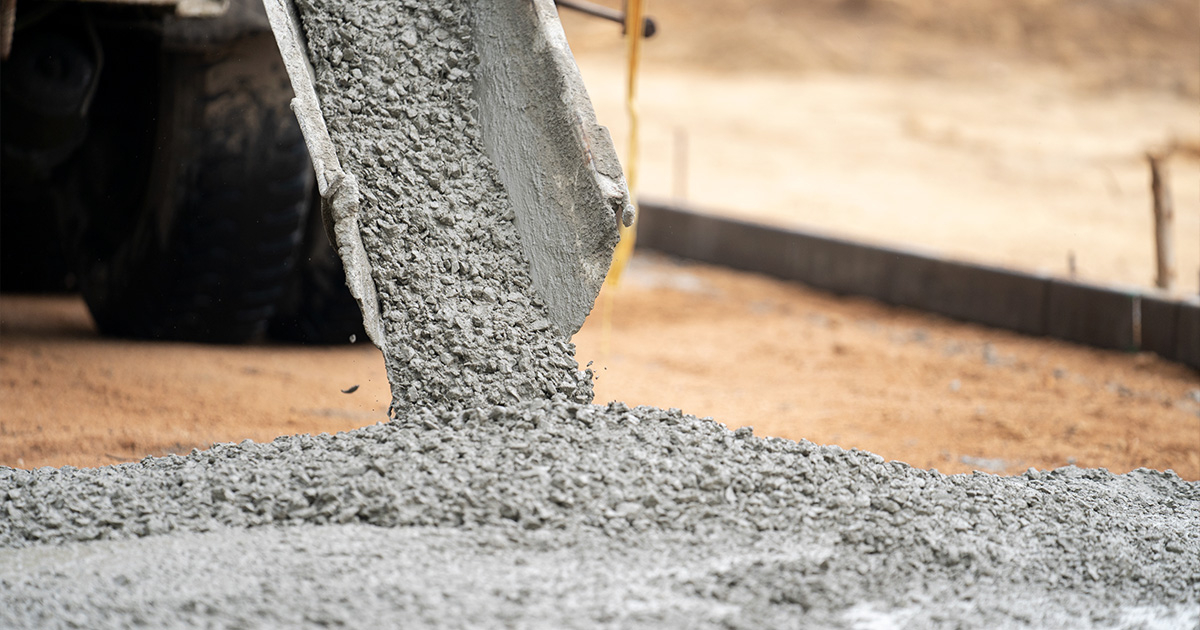
"Cement is the one thing you've got to have to make concrete," said Ron Hartman, vice president of sales of Ernst Concrete. "There's only so much of it being made right now, and the current demand is pushing supply to its limits."
In the construction industry, few materials are as essential as Portland cement. This versatile binding agent forms the foundation of countless structures, from towering skyscrapers to humble sidewalks. However, recent developments have stirred up a storm in the construction industry, particularly here in Ontario. A significant shortage of Portland cement is causing a ripple effect that's being felt not only in construction sites across Ontario but also across the border in New York State.
Ontario's construction boom has long been powered by an abundant supply of Portland cement. But the situation is changing. The province has traditionally sold a substantial amount of Portland cement in bulk to its neighboring state, New York.
While this cross-border trade has helped reduce the overall carbon footprint of both regions by minimizing the need for long-haul transportation, it has come at a cost—a supply shortage in Ontario.
As a result of this supply chain shift, Ontario's construction projects are now grappling with dwindling reserves of this critical building material. Cement, a key ingredient in making concrete, has become scarce, and the shortage — caused by a confluence of increased demand, labour shortages, inflation and issues at major plants — is creating serious problems for the construction industry across the country.
This scarcity is not only disrupting construction timelines but also driving up prices, leaving builders and developers in a tight spot.
A Versatile, Yet Essential Building Material
Portland cement is a fundamental building material used in a wide range of construction projects.
Here is a list of various types of construction projects where Portland cement is commonly used:
Residential Construction
Single-family homes
Multi-family apartment complexes
Condominiums and townhouses
Commercial Construction
Office buildings
Retail stores and shopping malls
Restaurants and hospitality establishments
Infrastructure Projects
Roads and highways
Bridges and overpasses
Tunnels and underground infrastructure
Industrial Facilities
Factories and manufacturing plants
Warehouses and distribution centers
Power plants and refineries
Public Buildings
Schools and universities
Hospitals and healthcare facilities
Government offices and administrative buildings
Transportation Projects
Airports and runways
Ports and docks
Railways and train stations
Sports and Recreation Facilities
Stadiums and arenas
Tennis courts and sports complexes
Recreational parks and playgrounds
Water and Wastewater Infrastructure
Water treatment plants
Sewage treatment facilities
Dams and reservoirs
Specialty Construction
High-rise buildings and skyscrapers
Historical restoration and preservation projects
Residential and commercial renovations
Agricultural Projects
Silos and grain storage facilities
Agricultural processing plants
Livestock housing structures
Energy Projects
Wind turbine foundations
Solar farm foundations
Hydroelectric dams and facilities
Mining and Quarrying
Extraction and processing facilities
Conveyor belt systems
Infrastructure for resource transportation
As you can see, nearly every industry is affected by the supply chain shortage of this essential building material.
The Rising Costs of Materials
Canada imported about $895 million in cement and concrete-related goods in 2021, according to Industry Canada, mostly from the U.S. and China.
Inflation is also a factor. Prices for many raw construction materials have risen over the last 12 months. Costs for categories like gravel and clay have also risen, up eight per cent since last summer, according to Statistics Canada's raw materials price index. In April 2022, the National Association of Home Builders in the U.S. released numbers showing that ready-mix concrete is nine per cent more expensive than it was at the start of 2021. The association also found building material prices for items like lumber, paint and concrete, have risen more than 30 per cent since the start of the COVID-19 pandemic.
Lack of Manpower
The supply shortages of concrete during this period were further compounded by several other factors.

The breakdowns at Readimix plants contributed to interruptions in the production and delivery of concrete. There was also a shortage of concrete truck drivers, stemming from manpower issues within the industry. To address this challenge, Readimix plants took the proactive step of hiring drivers from other companies, which helped alleviate the driver shortage and improve the reliability of concrete deliveries.
These additional reasons for supply shortages only go to prove the complex and interrelated nature of the challenges faced by the construction industry during that period. There was a constant need for collaborative solutions to ensure a consistent and timely supply of essential materials to construction businesses across Ontario.
How Did This Affect Us?
The reduced supply of concrete during the period from 2022 into 2023 had several significant impacts on our construction operations.
First, it resulted in smaller pour sizes, with our daily concrete supply decreasing from the previous 600-800m3 to 400-500m3. This reduction not only disrupted project timelines but also forced us to allocate more labour resources to complete the same amount of work, thereby driving up our labour installation costs.
The extended delivery times from Ready mix plants added to our construction challenges, as the supply rate dropped from an average of 60m3 per hour pre-COVID to as low as 30-40m3 per hour during the height of shortages. Fortunately, the situation has now improved, with supply levels returning to pre-COVID norms at 70-80m3 per hour.
These supply constraints have certainly posed significant logistical and financial challenges for our construction projects, but we have remained nimble and solution-oriented through each challenge.
So, Where Do We Go From Here?
As we’ve seen over the last few months, the shortage of Portland cement is sending shockwaves through the construction industry, not only here in Ontario but also across the border in New York State.
This essential building material is the backbone of countless construction projects, spanning from residential and commercial structures to infrastructure, industrial facilities, and more. The impact of this shortage is far-reaching, disrupting construction timelines and driving up costs, creating challenges for builders, developers, and ultimately, everyone involved in the construction process.
The combination of increased demand, labor shortages, inflation, and issues at major plants has created a supply chain crisis that demands our attention.
So where do we go from here? It's clear that addressing this issue needs a multifaceted approach, from exploring alternative materials and production methods to fostering collaboration between industry stakeholders and policymakers. Only by working together can we hope to soften the impact of this shortage and ensure a more resilient future for the construction industry.
